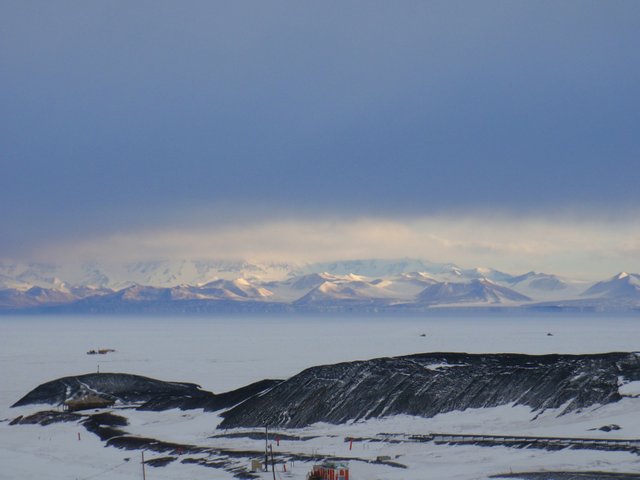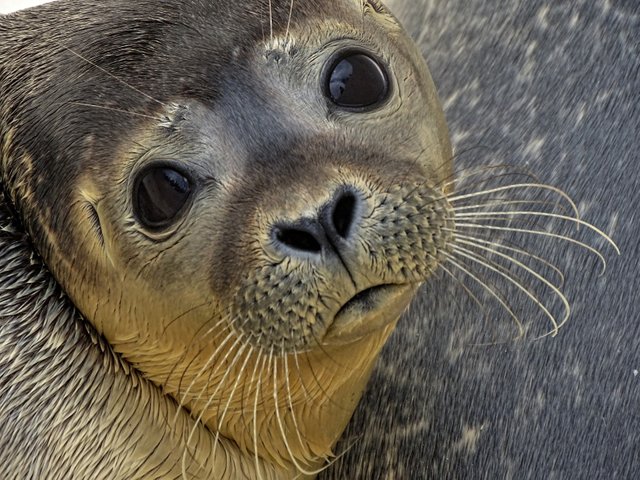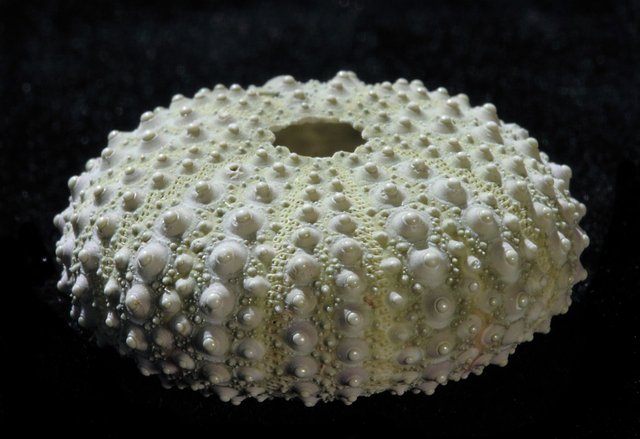
I seem to make friends rather easily where ever I go. It has always been this way for me. Talking has never been a stumbling block, not in the slightest, in fact, in my family we dubbed it "diarrhea of the mouth" - thanks Mom. Combine that with insatiable curiosity and you'll easily understand why I had no difficulty making friends with a bunch of oceanographer scientists. This particular group were conducting subtidal experiments and observations on the response of the benthic community to organic enrichment as a disturbance factor. Yeah, say that three times fast. Science aside, and due to my regular schedule of 10 hours a day, 6 days a week cleaning the Crary Lab, I came to meet and get to know Stacy L. Kim, Robert Bryce (Bob) Zook and Jennifer L. Fisher among many others.
October 30, 2004, the journal entry on the page before where my "bread - not bombs" sticker is stuck, I am reminded of my first dive tending experience with Stacy, Bob and Jennifer. They had a scheduled dive to check in on some of their long running underwater experiments.
I met them at the dive shack, a small brown wood clad building where all the various dive gear is stored and looked after. A red pistenbully vehicle, a big boxy thing that sits on a set of tank like treads, was waiting for us when I arrived. These vehicles make sense down here when you stop and consider that most of their time is spend driving on the frozen ocean where traction for normal round rubber tires might be an issue from time to time.
While I spent my initial minutes gathering and loading the dive gear, Bob and some of the others had the pistenbully's chassis cranked open at a 45 degree angle with inner workings fully exposed where they poked and prodded at things until a roaring belching engine spewed black smoke into our crisp clean air. They closed it up and let it idle while we finished our loading of the gear.
Before long, we were packed up and ready to depart. Stacy was in the driver's seat, I sat shotgun with my video camera at the ready, excited to capture the events of the day away from McMurdo base. Jennifer and Bob took up the two rear seats where they sat quietly for the duration. Curiosity led me to inquire about the workings of a vehicle like this. Stacy was kind enough to give me a basic run down on how the control operations when I asked. It looked like a fun one to drive but sadly, I would not get that opportunity during my time on the ice.
Once we set off, the noise kicked in as did the realization that this was not going to be a smooth ride. The footage I shot from that front seat during our drive out was so herky jerky that part of me wanted to record over it because it was so terrible. Any conversation about our destination, the distance or length of drive time was had in volumes three or four times louder than normal due to the shaking, juttering and grinding of metal on ice as we bounced around the interior of this little red rust bucket you'd swear was being rattled apart.
Arrival at the dive hut was rather uneventful and all business. Secretly, I think we were all very happy to be out of the noisy rattling confines of the pistenbully and amongst our grey overcast day where we could now enjoy the beautiful white canvas that Antarctica can at times paint. I had set the video camera down inside the hut while we unloaded all the gear. Someone had handed me a large green metal bar about five feet in length with one of it's ends pounded into a flat, chisel like tip. "Hey George, how about you go and open up the backup dive hole outside?" So that is what I did. I found the location about 30 feet away where a second hole had been drilled through the roughly ten foot thick frozen ocean surface. It has only been four days since someone was last out here and already there was a fairly thick skin of new ice formed over the surface of the hole. I continually hefted this metal bar up and then thrusted it into the new ice where it chipped and slowly shattered into a slurry/slush of broken bits and shards floating on the water just inches below.
When I went back into the hut after the ice chipping was completed, my never ending curiosity got the better of me and I had to ask what the outside hole was for seeing that there was a perfectly good hole right before me in the center of this hut. Jennifer came back with the answer "That is our backup escape hole in the event that a seal is using or blocking this hole when we come back up. We need a way to get ourselves out from under the the ice."
Divers in their dry suits, tanks on their backs and fins on their feet, they slowly hop down into the cylindrical icy entry tube one at a time. Flashlights, cameras and collection bags are handed down to them from above. One after the other, they descend, fade and eventually disappear into the murky green depths unknown to me.
For the better part of the next hour, I'm all alone in this tiny wooden structure sitting atop the frozen ocean, isolated at the bottom of the planet. It came as a surprise to me later when I saw a notice pegged to a community board mentioning the offer of support or wanting/needing someone to talk to, that some people actually struggled or had difficulty with this notion of separation or isolation/desolation from being down in Antarctica. I was quite the opposite and at my happiest during my time on the ice. Thoughts of isolation or missing loved ones never really entered my mind although seeing this note did give me pause and made me realize that each and every one of us experiences the world in a slightly different manner. To have that epiphany at that point in time, I consider a gift because previously I felt as though I were going about life with blinders on.
As I patiently waited for the divers to complete their survey and their research, I was left to my own devices. I went outside and shot some video footage of the surrounding glacier, the pistenbully, the hut and frozen landscape. I prepped the snacks and hot chocolate for when the dive was over and my three frozen scientist friends needed something to warm them from the inside. Then it hits me, nature's call. Where does one find relief I thought? This wooden rectangular box was too small to include any kind of restroom facility, so I did what everyone probably did in that situation. I used the external back wall of the hut.
Without too much fan fare, Stacy, Bob and Jennifer all completed their dives and exited the dive hole like professionals. I helped each peel off the layers of gear and find warmth in dry clothes while making sure everyone had a hot drink and something to eat. As the gear was being loaded back in the vehicle, Jennifer calls out to me "George, do you want to go check the other dive hole, I saw bubbles here and there might be a seal!" I was out of the hut fast, but being careful not to slip and fall. I was walking on the frozen ocean surface after all. I arrive at the backup hole where not even an hour before I stood there chipping away the solid surface ice cover. Video camera in hand and held at chest height in half ready fashion. I stand there at the edge of this hole watching the fractured bits of ice bob up and down with the current. I find it mesmerizing and get lulled into a minor hypnotic trance for a minute or two, just staring, waiting, wondering.
I wasn't really prepared for what happened next so when the huge dark grey seal plunged his grey speckled head up through all the broken shards of floating ice to gasp a breath, I jumped, then fumbled the camera while trying to find the big red record button next to my thumb. Finally recording, I focus and do my best to capture this amazing creature in the center of the view finder. Here I am just a few feet from this amazing creature, I sense a huge connection with this lovely dark grey beast with curious soulful dark brown eyes staring back. As the beast rhythmically breathes, noisy exhalations shoot from it's nostrils. There is a nonchalance, a restful demeanor that calms me and brings me closer to this animal. As I stand motionless, continuing to shoot, the seal occasionally ducks his head under the water to look below. What its looking for I do not know. I am only concerned with attempting to capture this once in a lifetime event to the best of my ability. I know not how long the seal will stay or if I will ever get this chance again. No pressure. The event lasted no more than 90 seconds. The footage I captured was in focus, centered and held as steady as humanly possible. I was proud of my accomplishment and very thankful for the careful eye and attention from Jennifer who alerted me. That is why I feel absolutely terrible for what happened at the end of this dive tending adventure.

As we carefully and noisily retraced our path back to McMurdo and our little brown dive hut the excitement of my brief antarctic wildlife encounter eases and fades as the memory solidifies. Stacy, Bob and Jennifer are happy I got to have that little experience and granted me an audience when I wanted to share it with them.
Unpacking the gear was as uneventful as it was when we loaded it. I am careful to do a good job so as to not tarnish my good reputation as a dive tender. I make sure the pistenbully is empty and that we have unloaded everything. After my last load of gear makes it into the dive hut where items are replaced to their proper locations, I exit the hut and approach the others who are still gathering personal items and other bits from the pistenbully. As I walk towards the others, I spot a pink tupperware box sitting on a crate off to the side, near the pisenbully. Without thinking and in one fluid motion, I swoop in on the thing, snatch it as if it were prey and shake it vigorously to see if it contained anything. It did.

In an energetic call to the others, I confidently and proudly ask "Hey, does this pink tupperware belong to anyone?" What I didn't know prior to the finding of this little pink box was that from time to time, people take souvenirs from their dives, things you can't necessarily get in other parts of the planet or perhaps just a little token item from the bottom of the Antarctic Ross Sea as a memento or reminder of one's accomplishments. Jennifer as it happens, had done just that and been ever so careful to protect her little gift to herself, a pristine and fragile anemone shell, by placing it in this tupperware container and then setting it carefully aside and out of the way where it would be safe. Well, Jennifer piped up with a response to my question almost before I was done asking. She simply asked "You didn't shake it, did you?"
